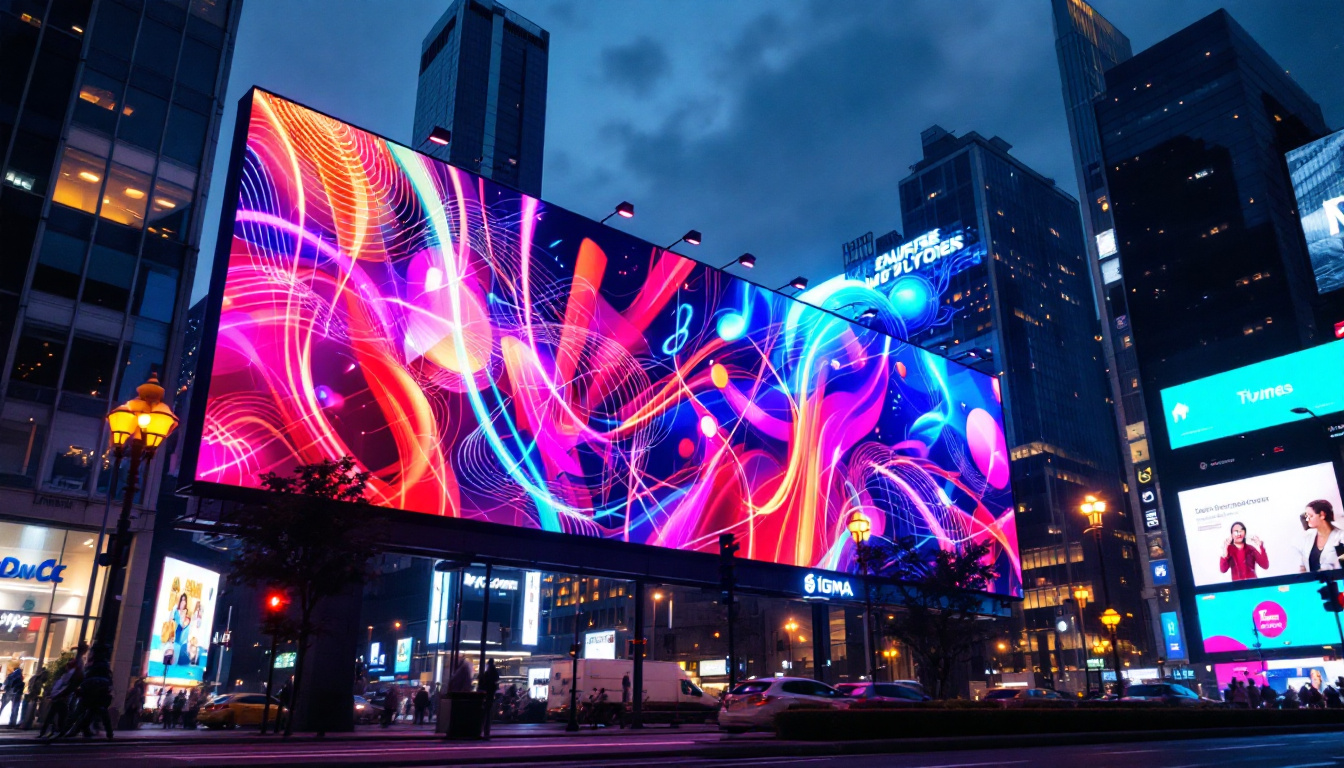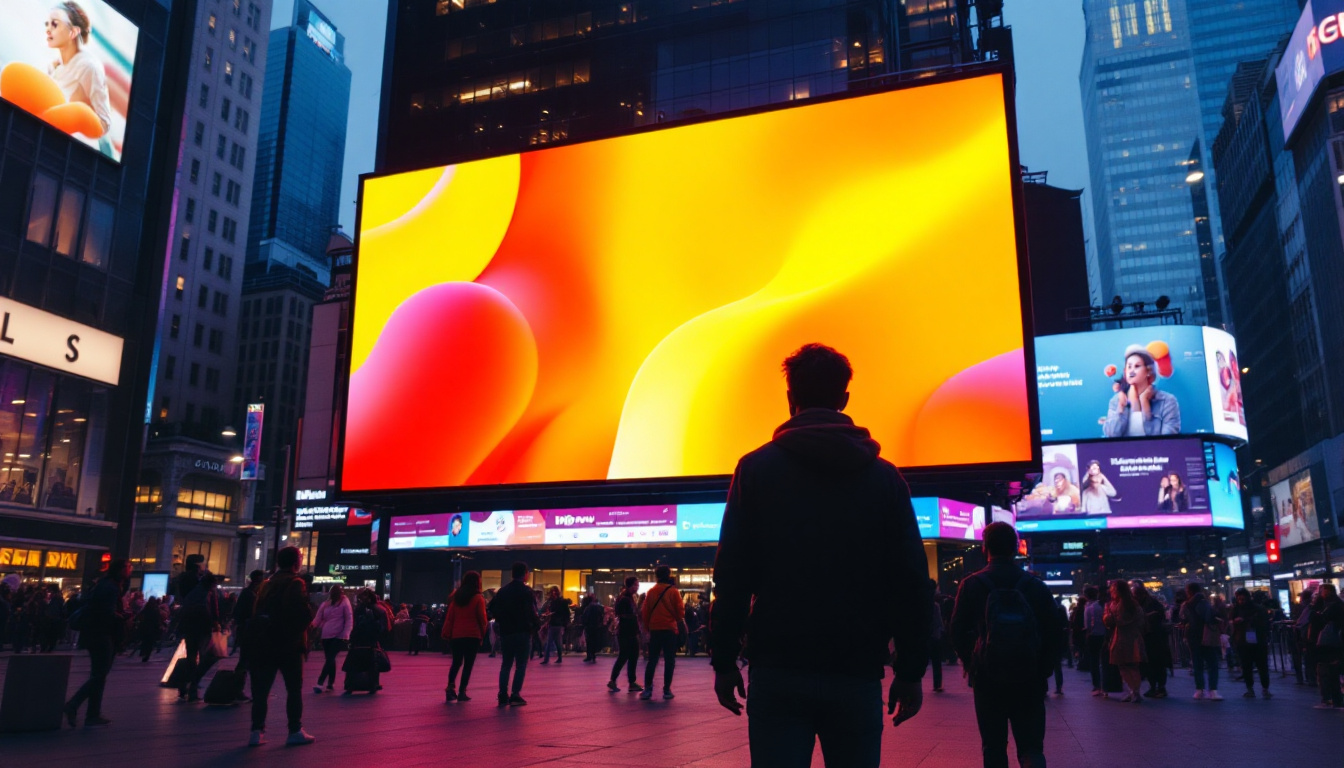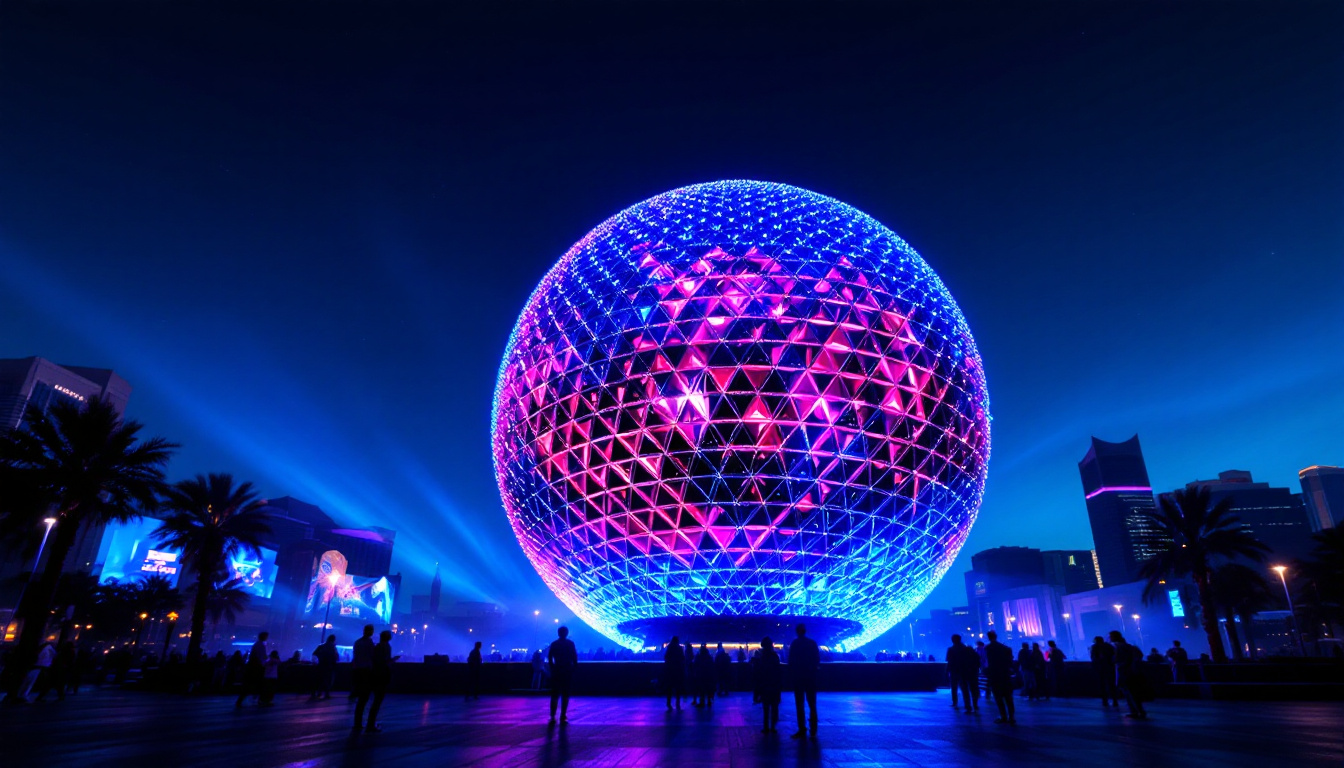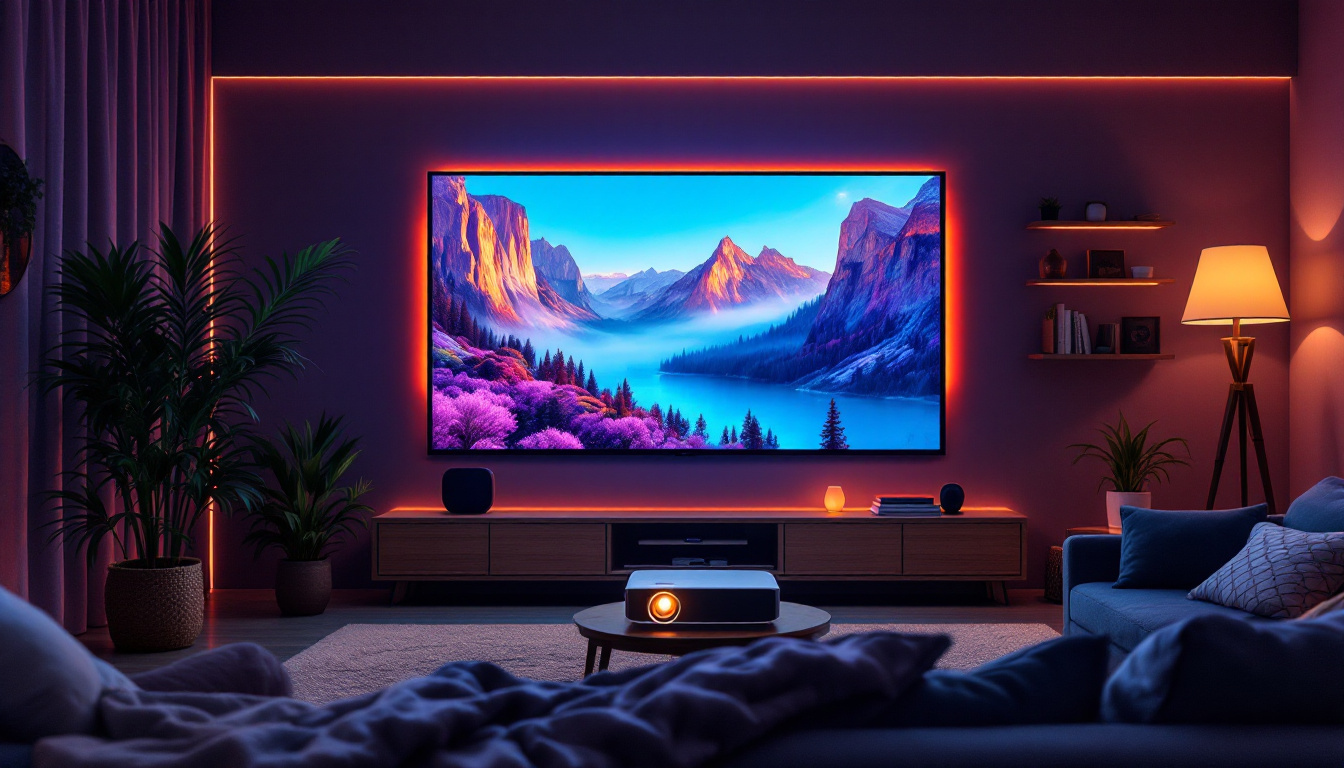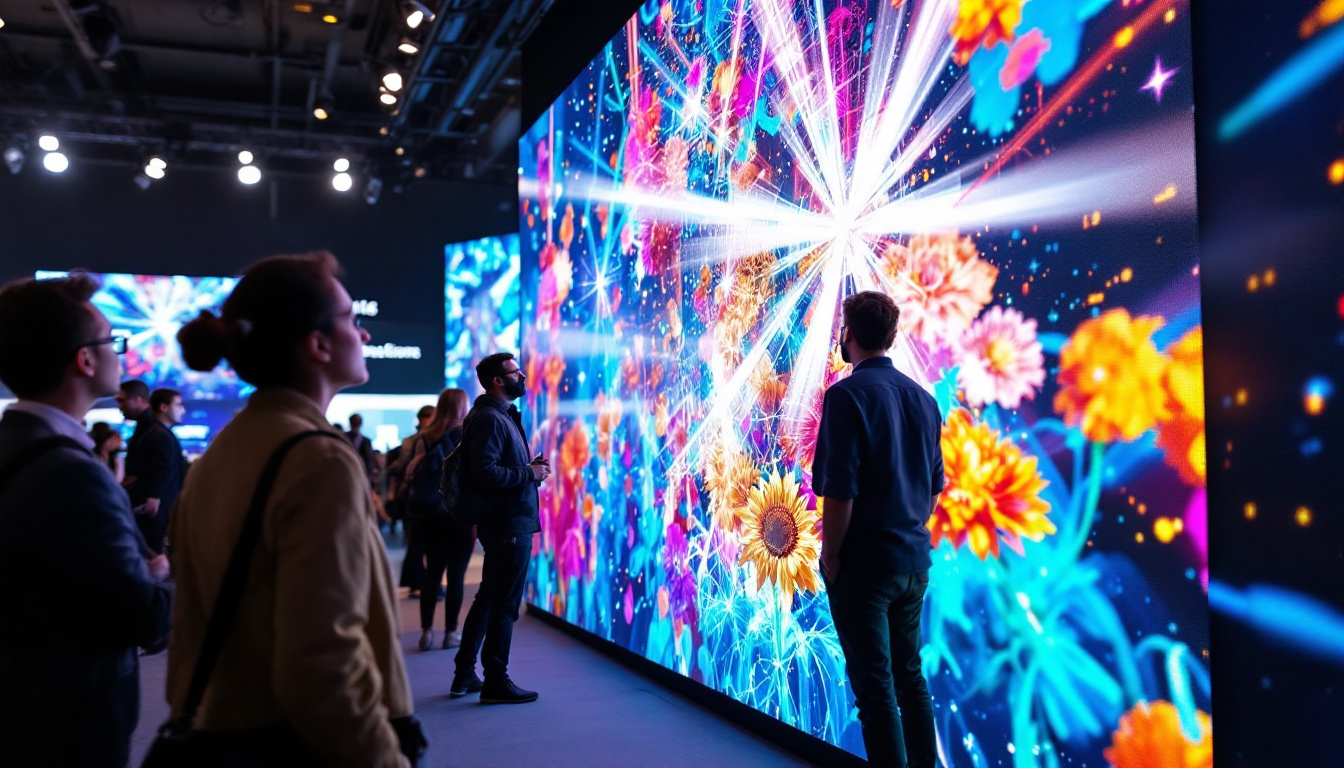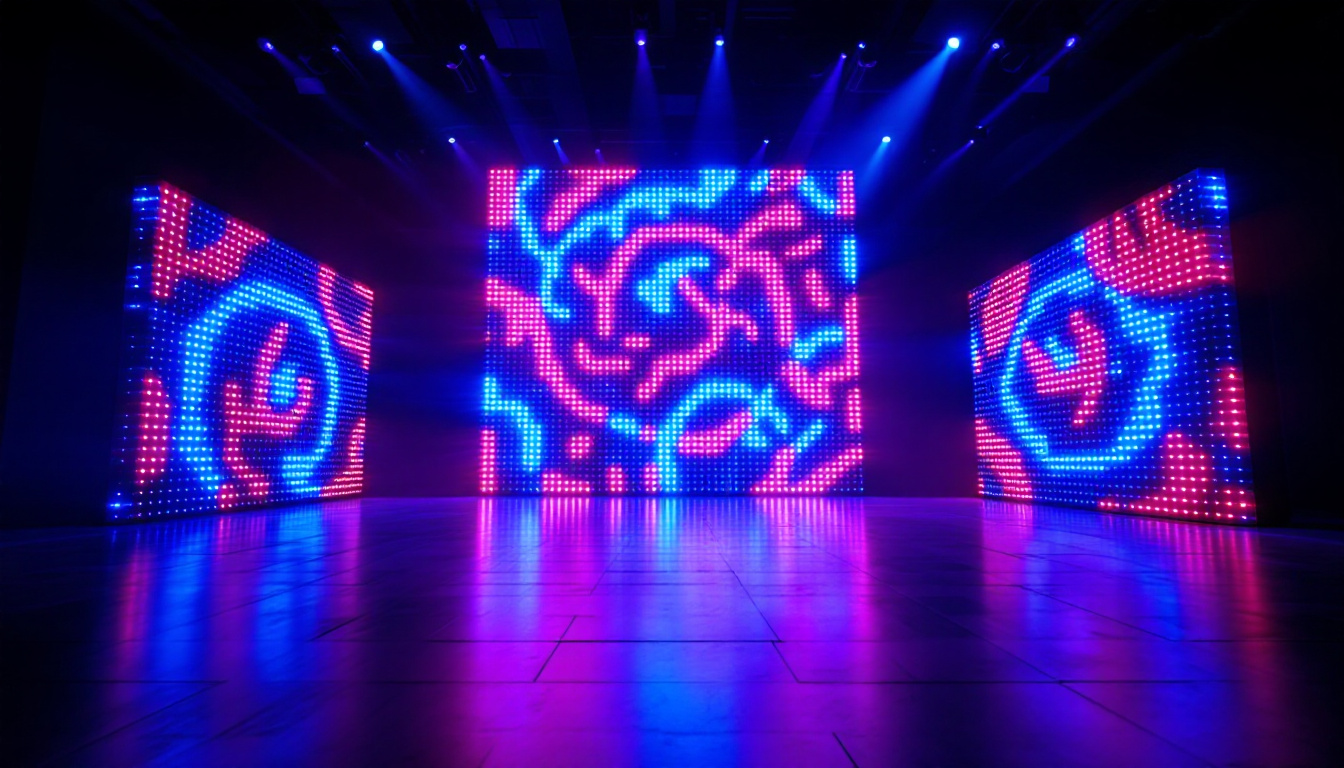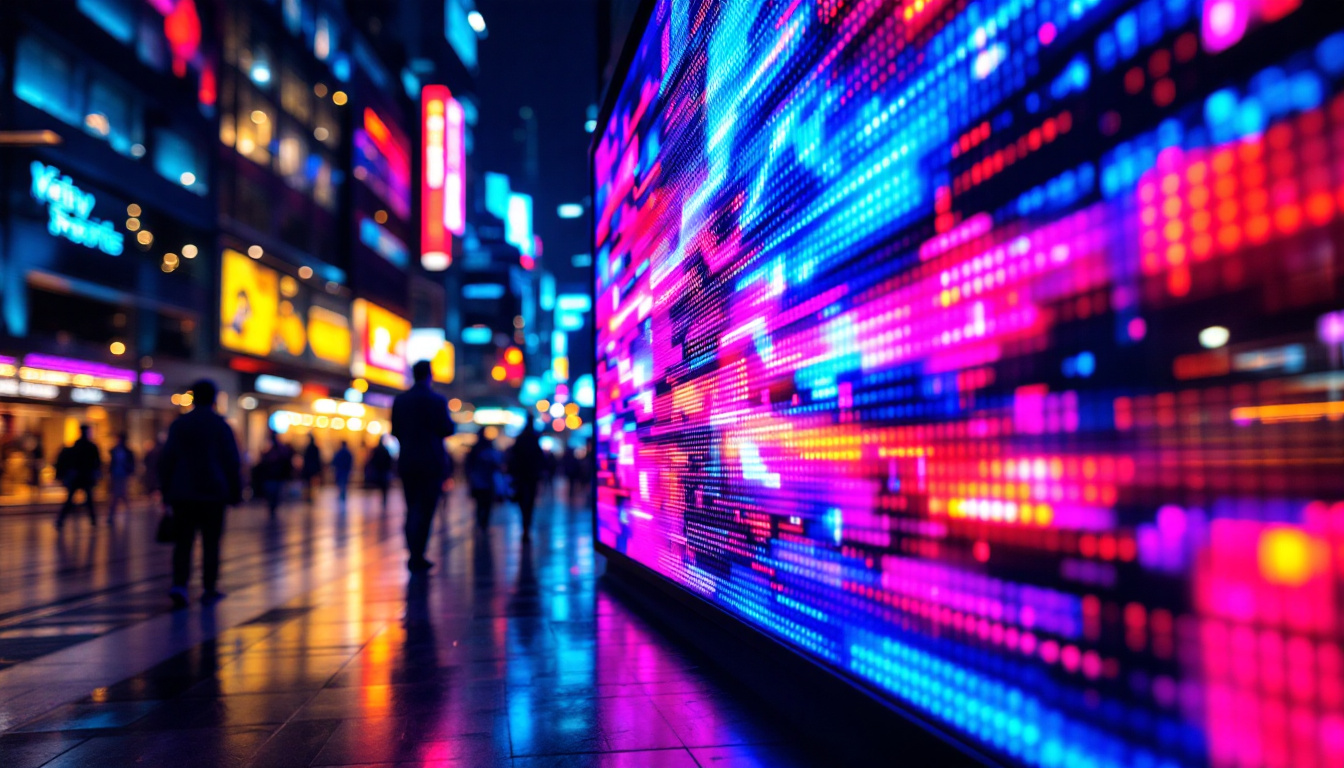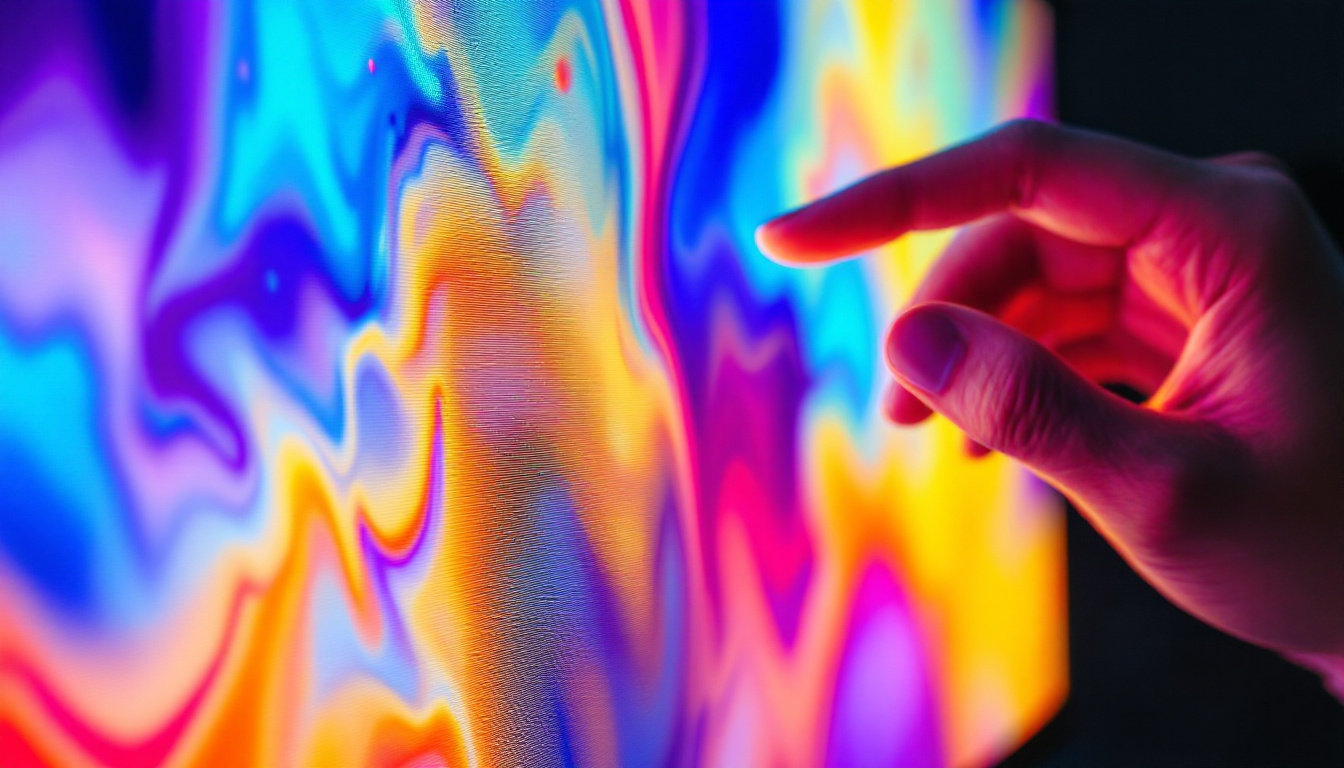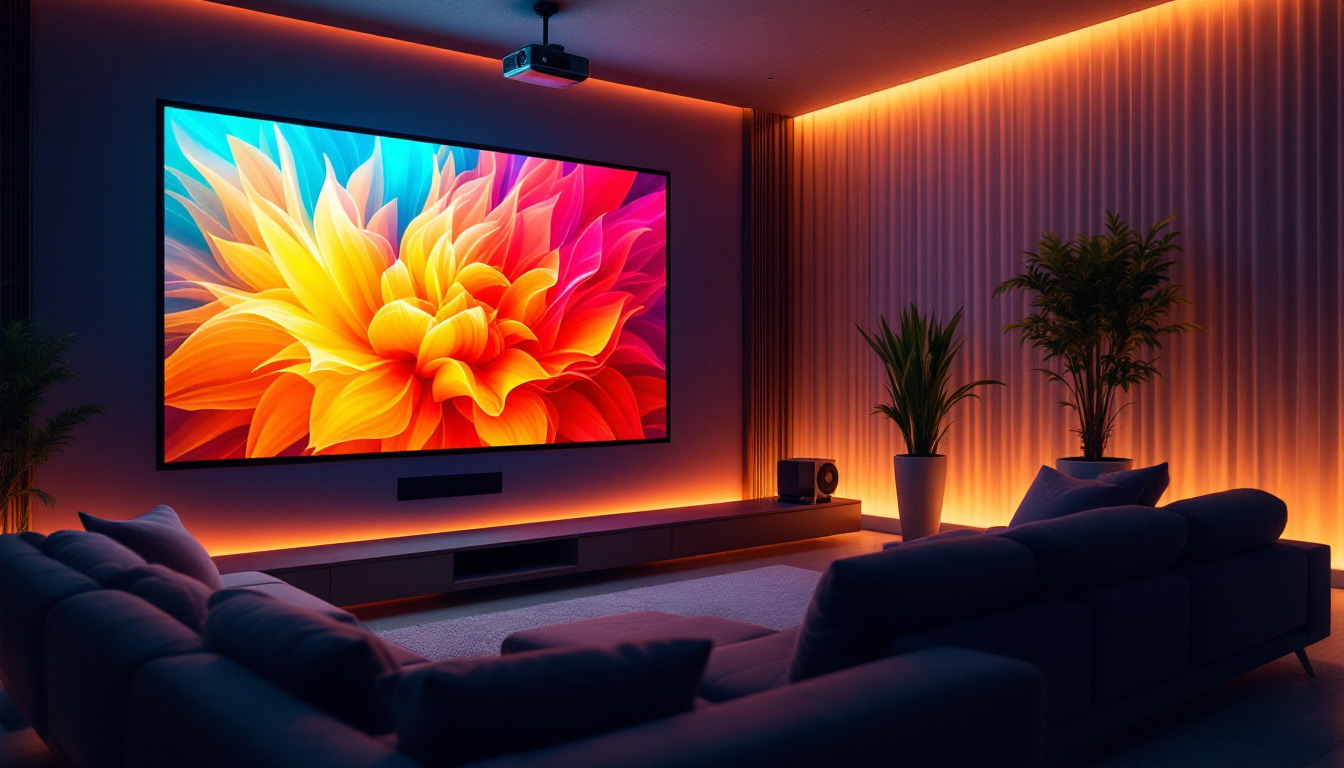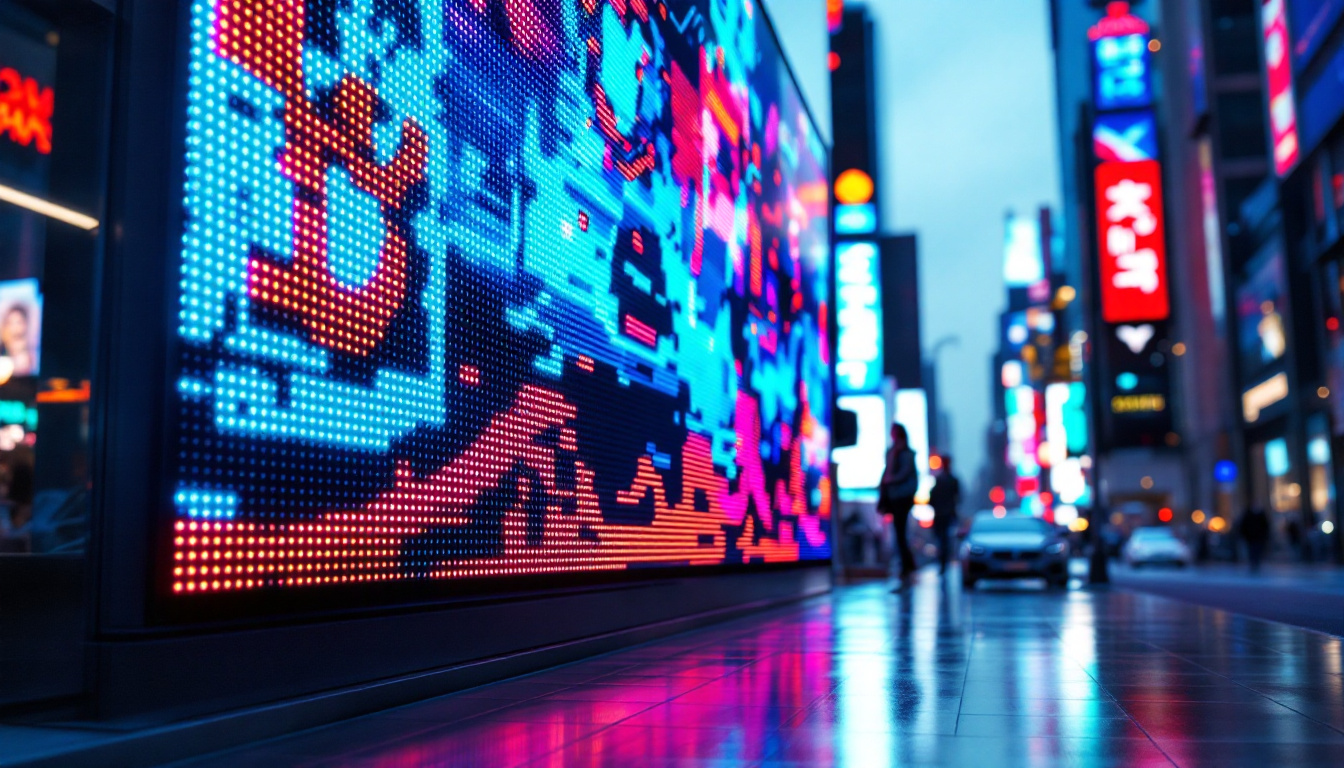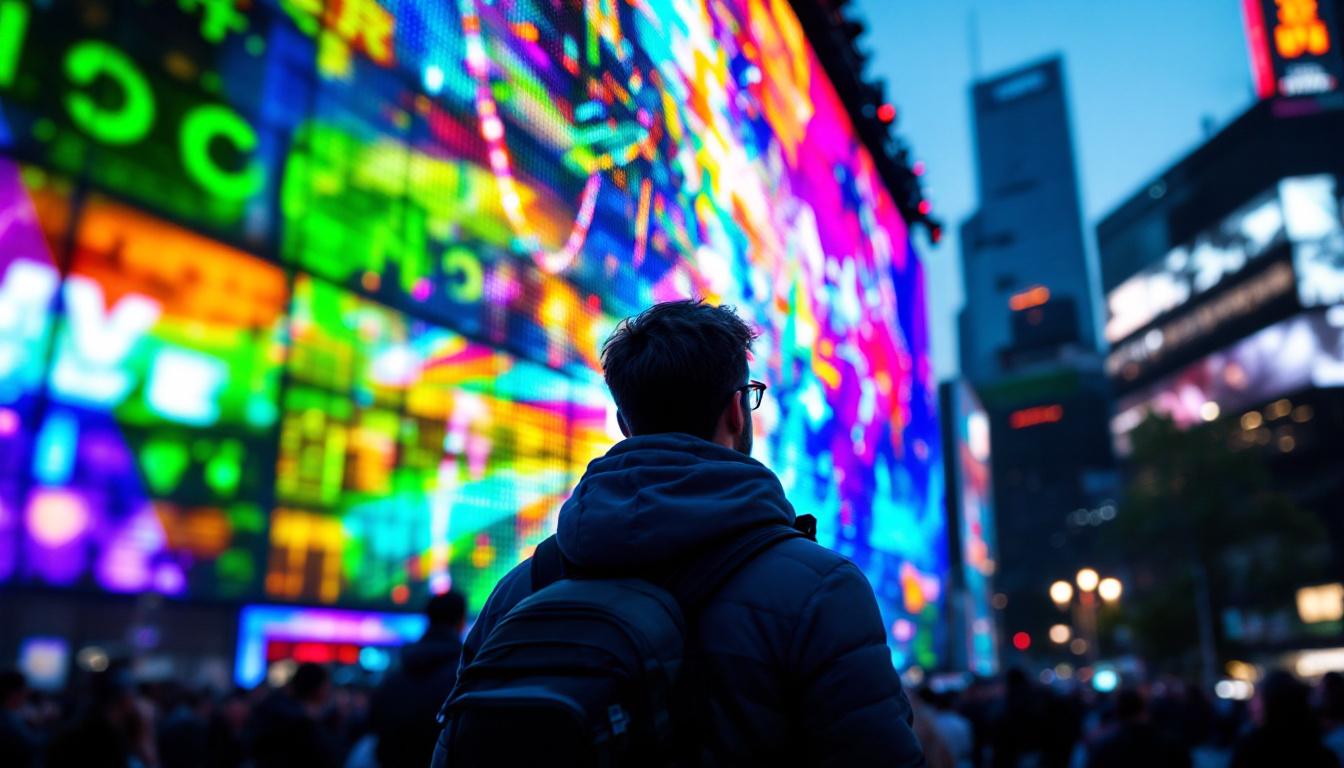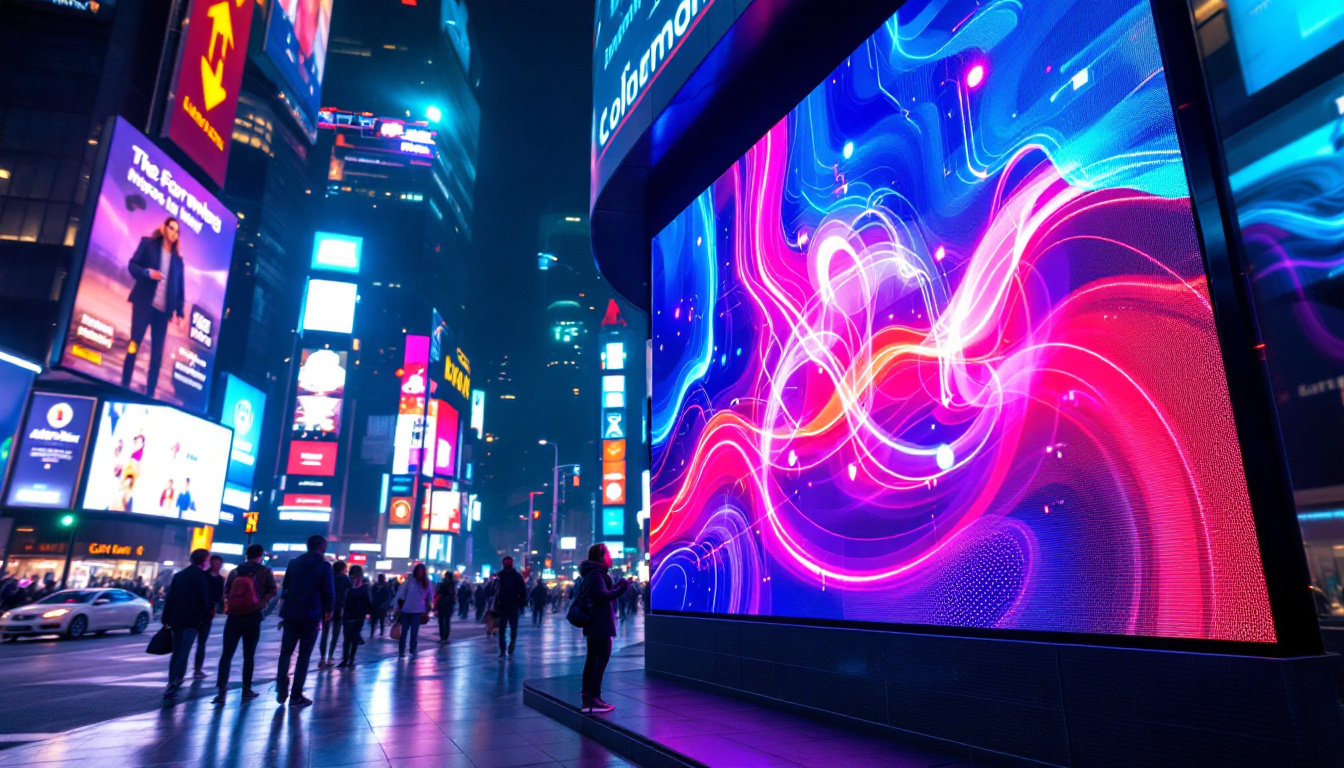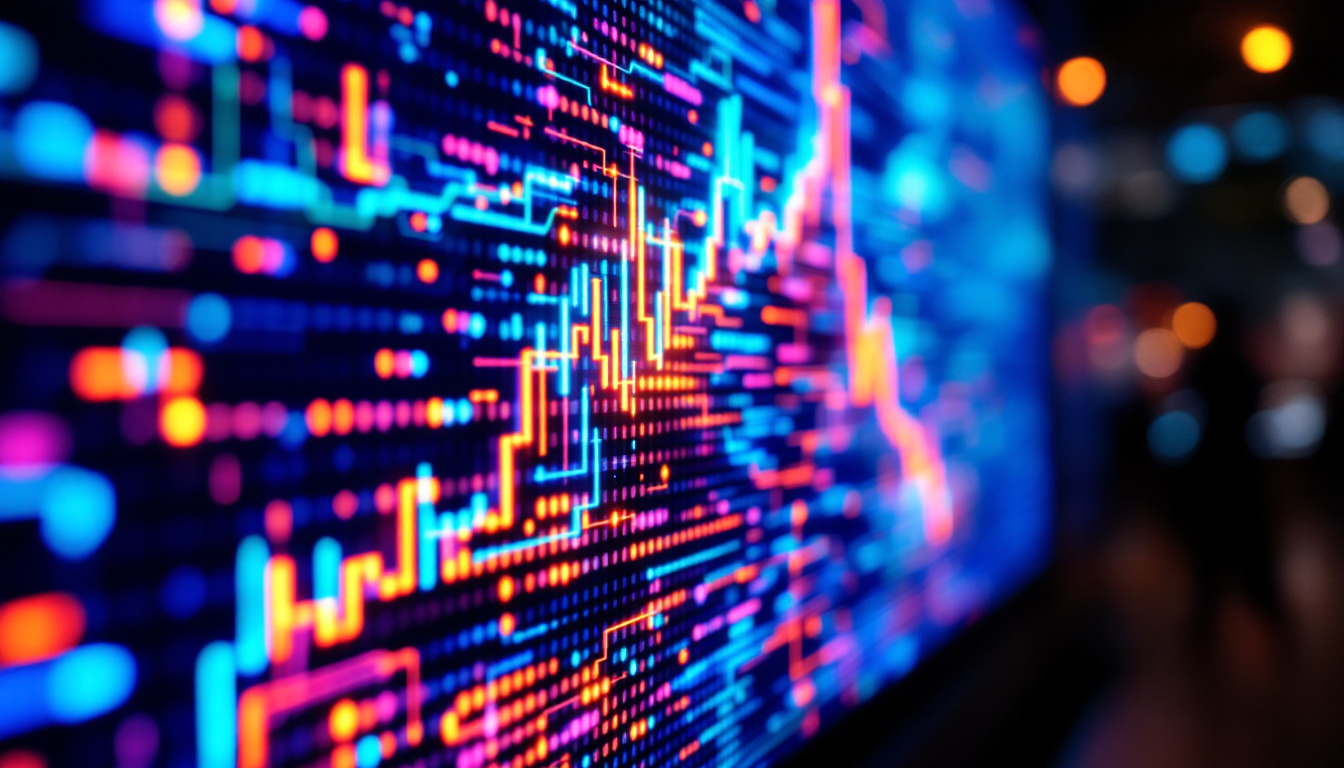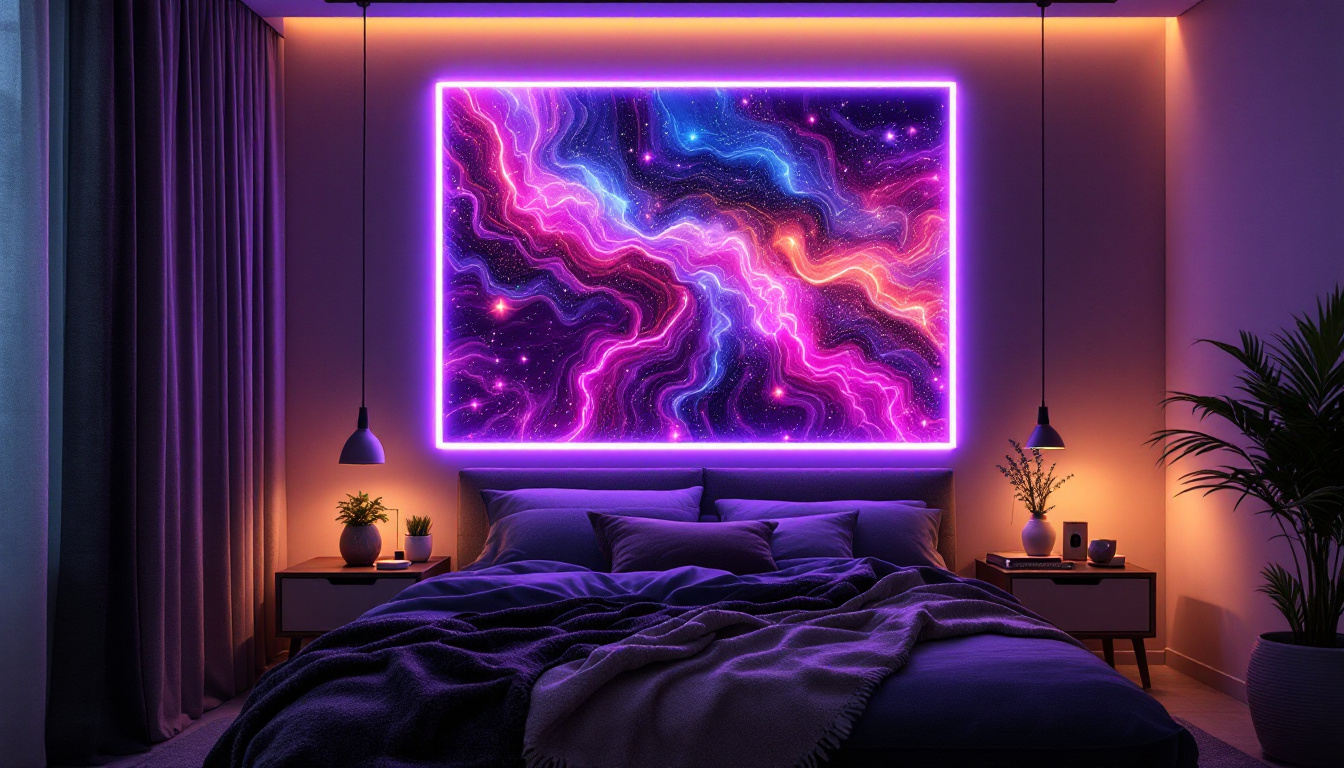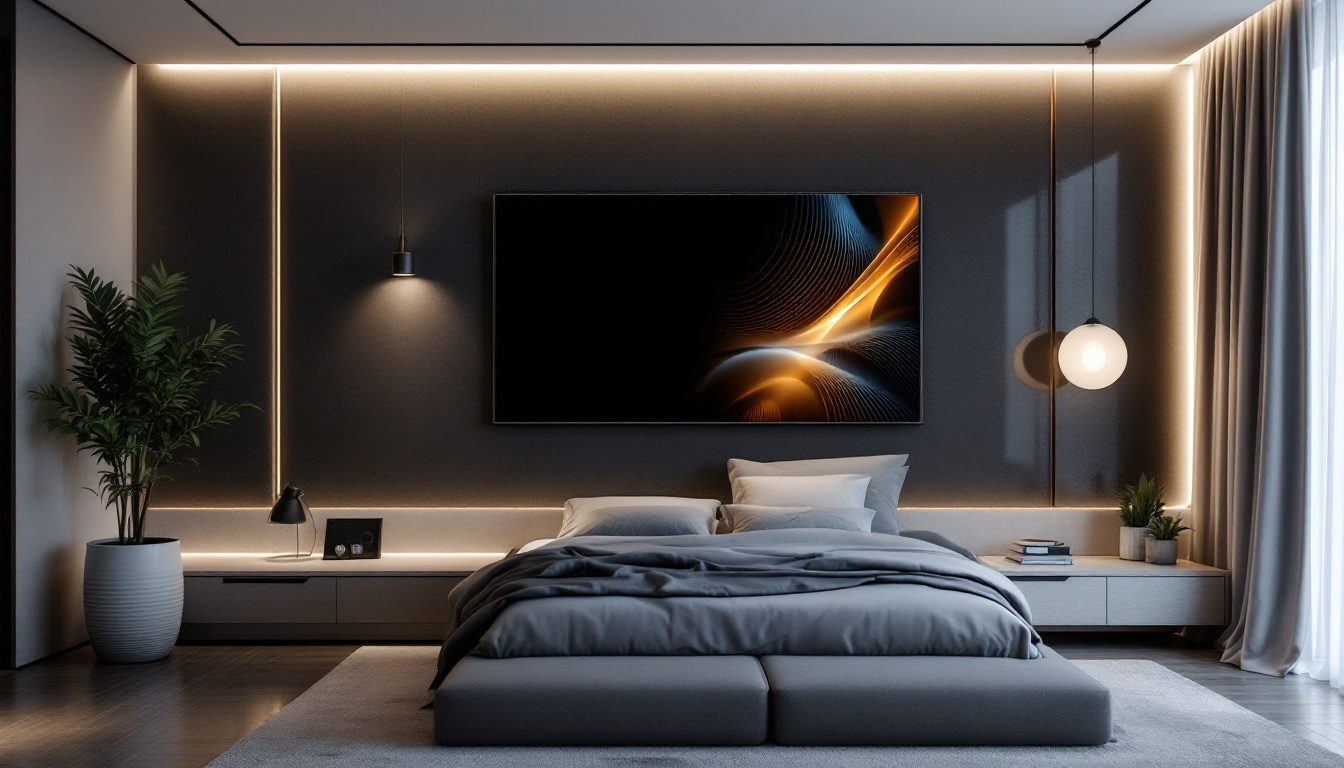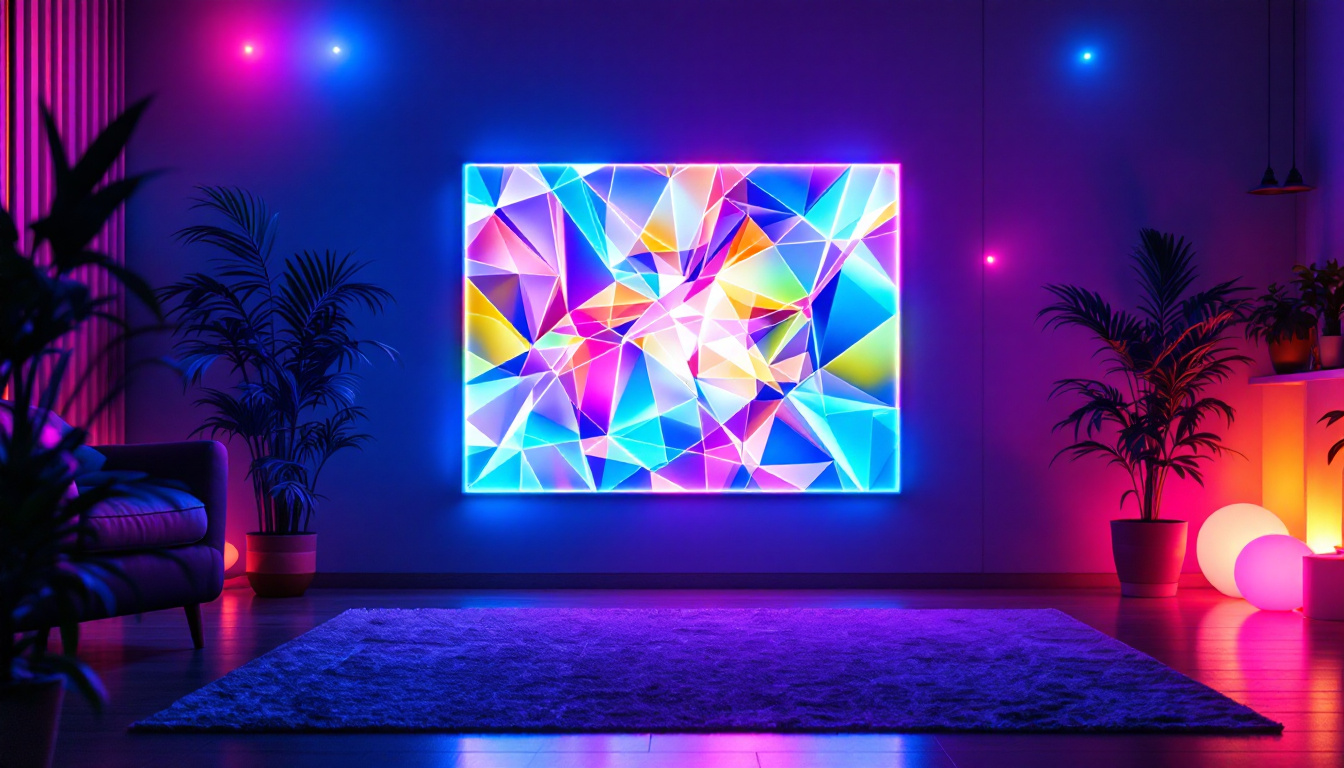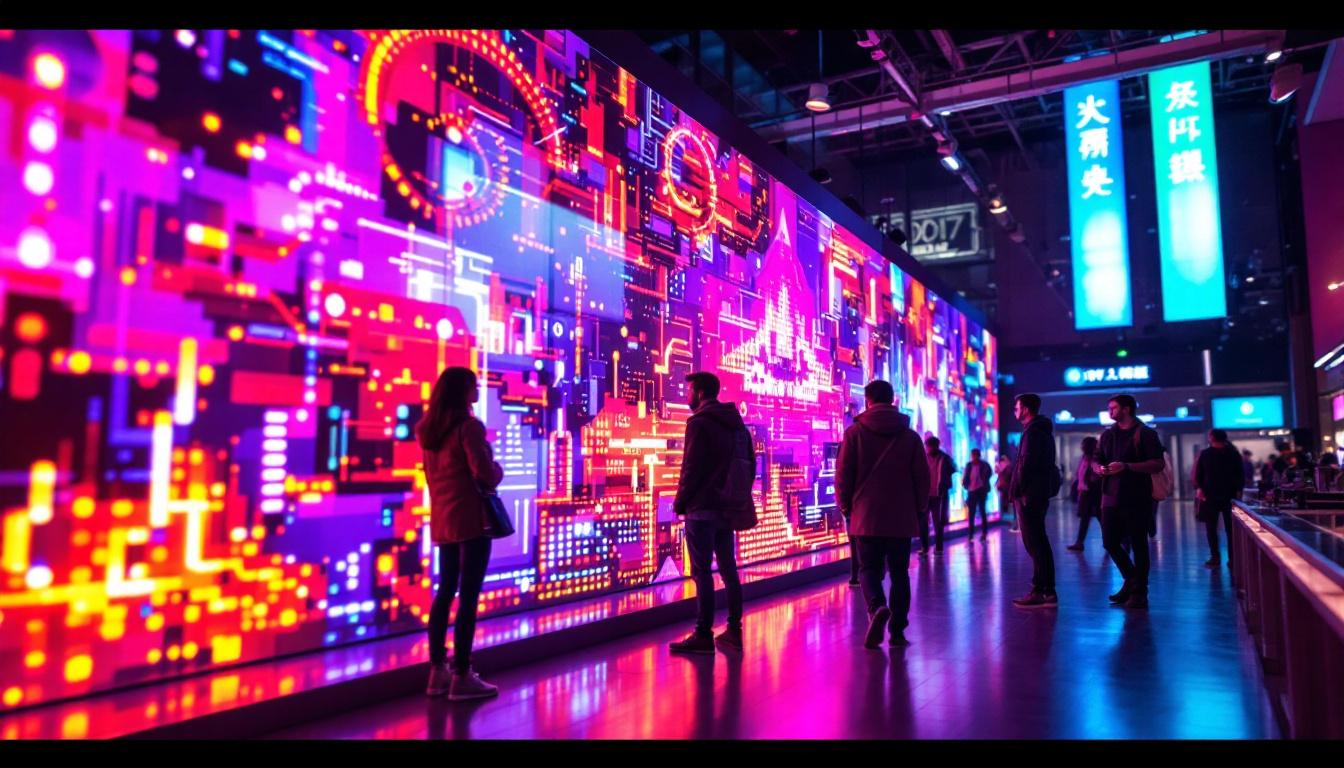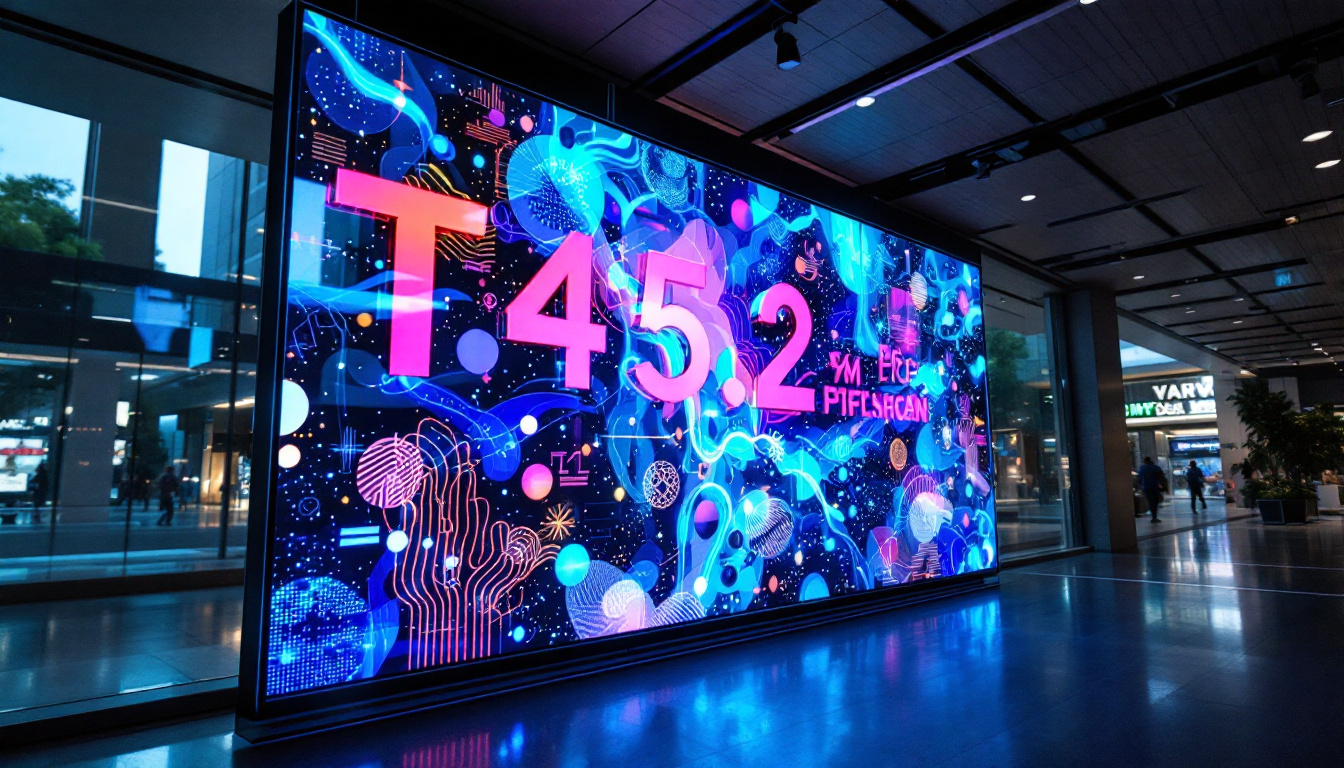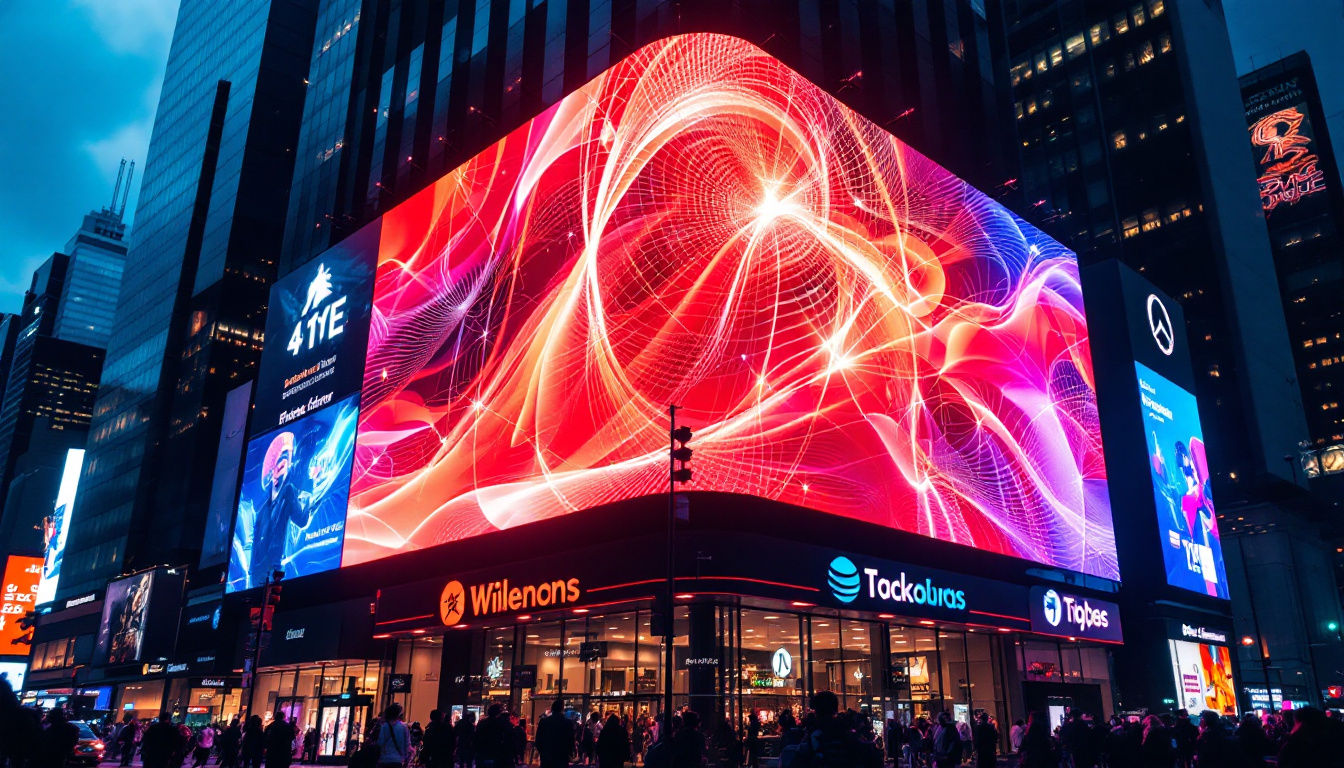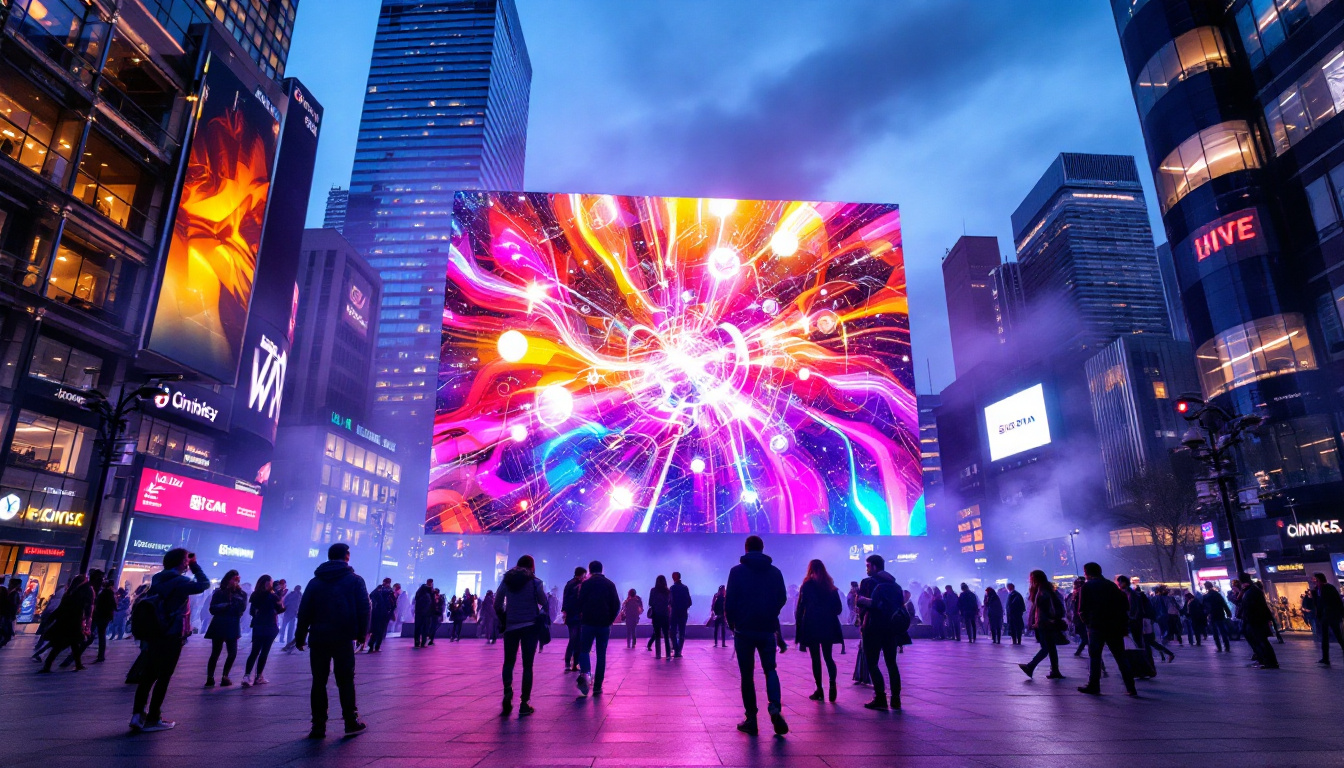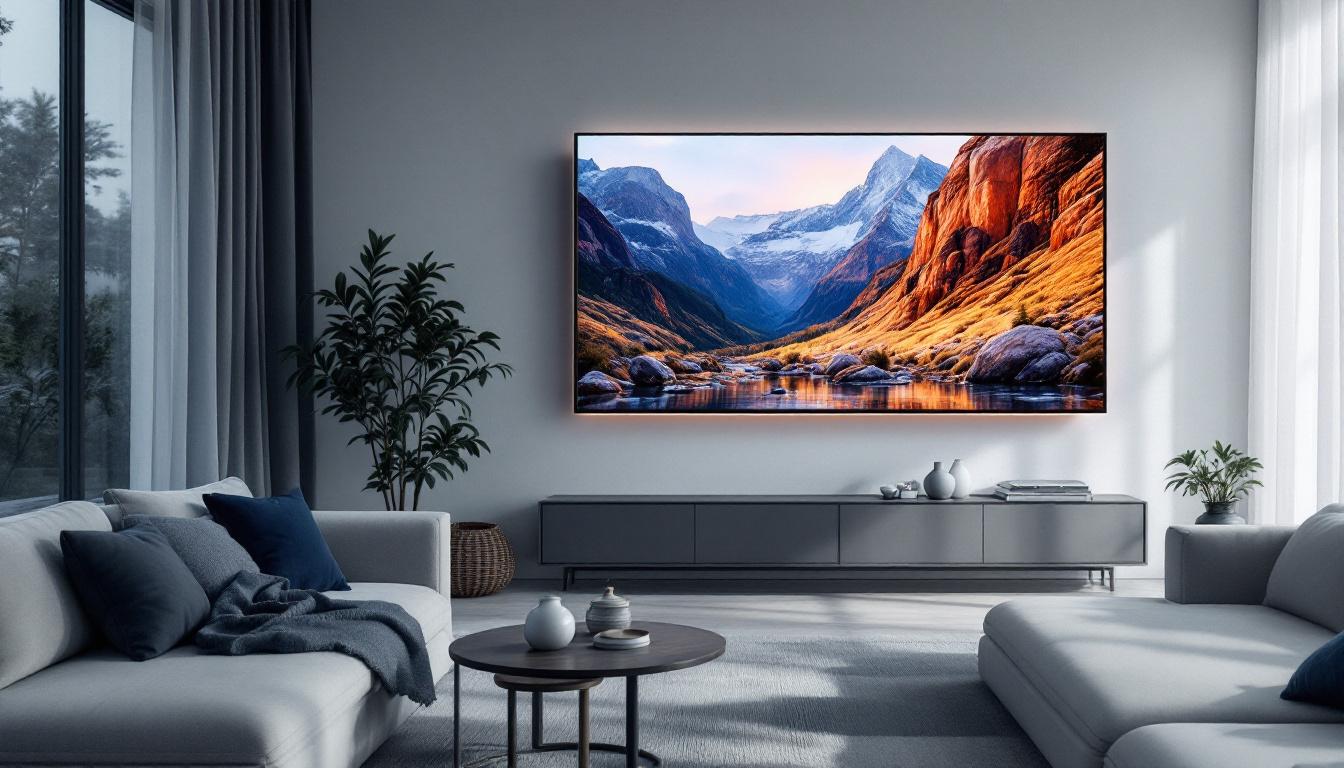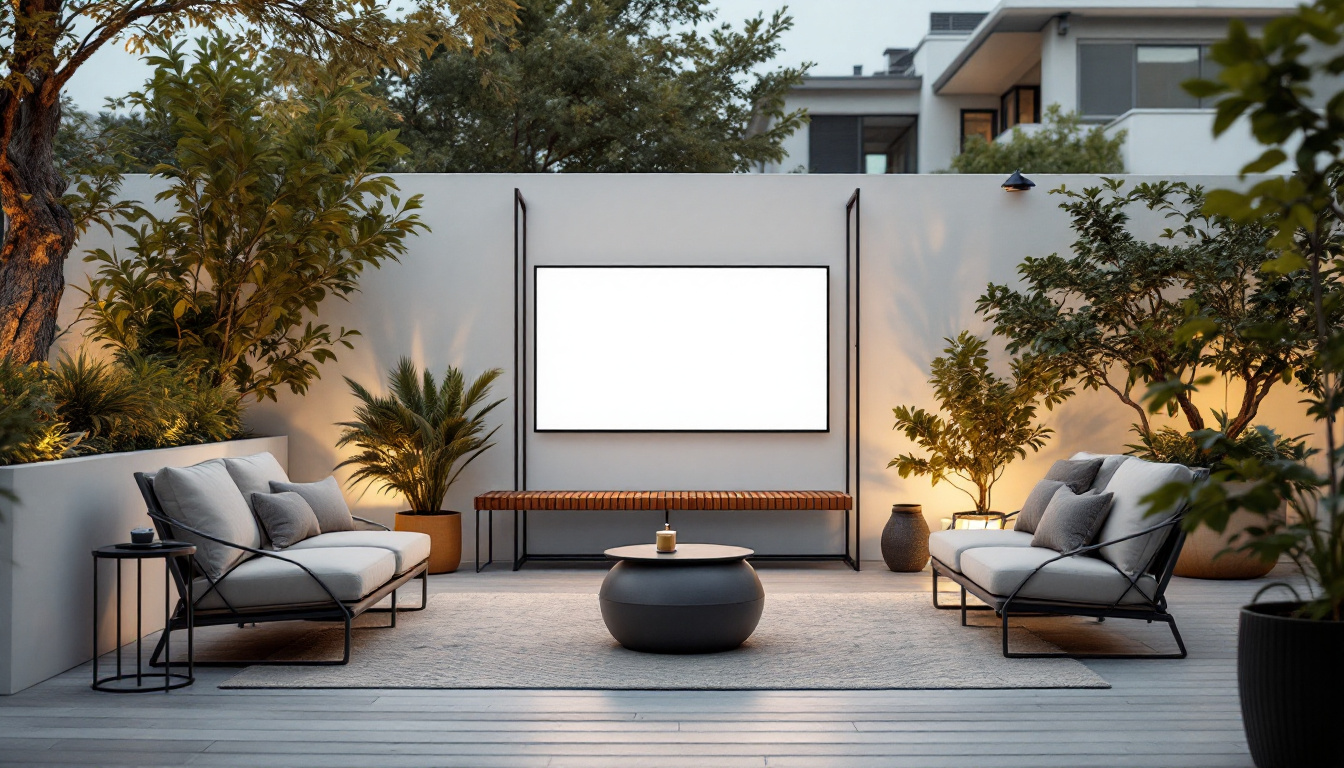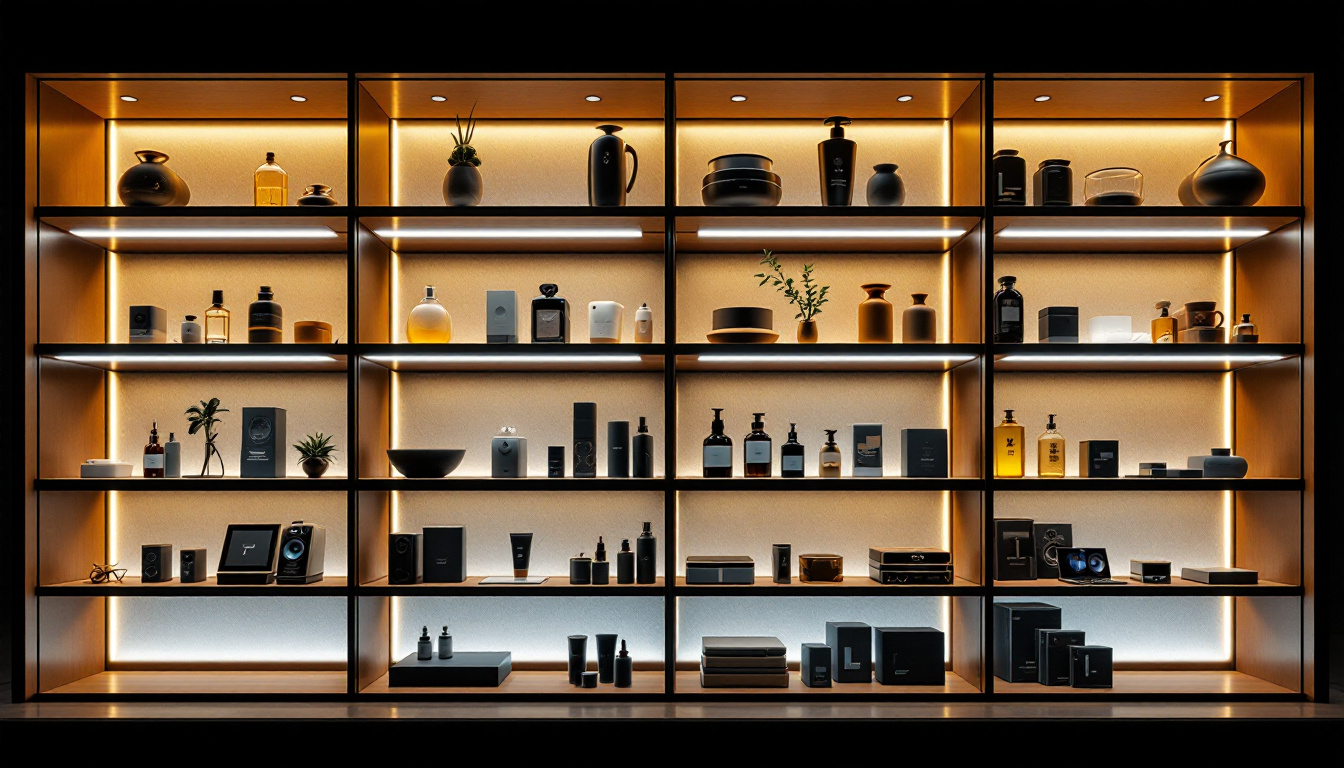In the fast-evolving world of advertising and media, LED displays have emerged as a powerful tool for capturing attention and conveying messages effectively. These vibrant, dynamic displays are not just a trend; they represent a significant shift in how brands communicate with their audiences. This article delves into the intricacies of LED displays, exploring their technology, benefits, applications, and the future of digital advertising.
Understanding LED Technology
Light Emitting Diodes (LEDs) are semiconductor devices that emit light when an electric current passes through them. The technology behind LED displays has advanced dramatically over the years, making them a popular choice for both indoor and outdoor advertising. Originally developed in the early 1960s, LEDs have evolved from simple indicator lights to complex systems capable of producing vibrant, full-color images. This evolution has not only transformed advertising but has also impacted various industries, including entertainment, automotive, and even healthcare.
How LED Displays Work
LED displays consist of numerous tiny light-emitting diodes arranged in a grid format. Each diode can be individually controlled to produce a range of colors, allowing for stunning visuals and animations. The combination of red, green, and blue (RGB) diodes creates a full spectrum of colors, resulting in high-quality images and videos. The technology behind these displays also includes advanced drivers and controllers that manage the color mixing and brightness levels, ensuring that the visuals are not only eye-catching but also consistent across the entire display.
The brightness and clarity of LED displays are particularly noteworthy. Unlike traditional billboards, which can be washed out by sunlight, LED displays maintain their vibrancy even in direct sunlight, making them ideal for outdoor advertising. Additionally, the ability to change content quickly and easily gives advertisers the flexibility to tailor their messages to specific audiences and times. This adaptability has led to the rise of dynamic advertising strategies, where content can be modified in real-time based on factors such as weather, time of day, or audience demographics, maximizing engagement and effectiveness.
Types of LED Displays
There are several types of LED displays, each designed for specific applications. The most common types include:
- Outdoor LED Displays: Designed to withstand the elements, these displays are typically used for large-scale advertising in high-traffic areas. They are built with durable materials and often feature protective coatings to resist rain, wind, and UV damage.
- Indoor LED Displays: These displays are used in venues like shopping malls, airports, and sports arenas, where they can engage audiences in a more intimate setting. Indoor displays often have a higher pixel density, allowing for closer viewing without sacrificing image quality.
- Mobile LED Displays: Mounted on trucks or trailers, these displays can be transported to various locations, making them ideal for events and promotions. Their mobility allows advertisers to reach diverse audiences at festivals, concerts, and sporting events, creating unique opportunities for brand exposure.
In addition to these common types, there are also specialized LED displays such as transparent LED screens, which allow for visibility through the display while still showcasing vibrant content. These are often used in retail environments to enhance product visibility without obstructing the view of the store. Furthermore, advancements in flexible LED technology have led to the creation of bendable displays that can be integrated into unconventional shapes and surfaces, opening up new avenues for creative advertising and design. As LED technology continues to innovate, the possibilities for its application seem limitless, paving the way for even more engaging and interactive experiences in the future.
The Benefits of LED Displays
LED displays offer numerous advantages over traditional advertising methods. Their ability to capture attention and convey messages effectively has made them a preferred choice for many advertisers.
High Visibility and Impact
One of the most significant benefits of LED displays is their high visibility. The bright, vibrant colors and dynamic content make them stand out, even in crowded environments. This visual impact is crucial for attracting potential customers and ensuring that messages are seen and remembered.
Moreover, the ability to display moving images and videos enhances engagement. Studies have shown that dynamic content is more likely to capture attention than static images, making LED displays a powerful tool for storytelling and brand promotion. This capability allows businesses to showcase their products in action, share customer testimonials, or even broadcast live events, creating a more immersive experience for viewers.
Furthermore, LED displays can be programmed to change content frequently, allowing businesses to update their messages in real-time. This flexibility is particularly beneficial for promotions, events, or seasonal campaigns, ensuring that the displayed content remains relevant and timely. As a result, advertisers can maximize their reach and impact, adapting their strategies to meet the ever-changing demands of their audience.
Cost-Effectiveness
While the initial investment in LED technology can be substantial, the long-term savings are noteworthy. LED displays are energy-efficient, consuming significantly less power than traditional lighting solutions. This efficiency translates into lower electricity bills and reduced environmental impact.
Additionally, the durability of LED displays means they require less maintenance and have a longer lifespan. With proper care, an LED display can last for over a decade, making it a cost-effective solution for businesses looking to invest in advertising. The reduced need for replacement parts and repairs further contributes to overall savings, allowing companies to allocate their resources more effectively.
Moreover, the versatility of LED displays extends beyond advertising. They can be utilized in various settings, from retail environments to corporate offices, enhancing not only marketing efforts but also internal communications. For instance, companies can use LED screens for presentations, employee announcements, or even as part of their décor, creating a cohesive and modern atmosphere. This multifunctionality adds to the value of LED displays, making them an attractive investment for a wide range of applications.
Applications of LED Displays
The versatility of LED displays allows them to be used in a wide range of applications across various industries. From advertising to entertainment, their impact is felt in numerous sectors.
Advertising and Marketing
In the advertising realm, LED displays are used to promote products, services, and events. Their ability to display vibrant visuals and change content quickly makes them ideal for campaigns that require flexibility. Brands can tailor their messages based on time, location, and audience demographics, ensuring maximum relevance and engagement.
Furthermore, LED displays can be integrated with social media platforms, allowing brands to showcase user-generated content and real-time interactions. This integration enhances brand loyalty and encourages customer participation.
Entertainment and Events
LED displays have become a staple in the entertainment industry. From concerts and festivals to sporting events, these displays enhance the overall experience for attendees. Large-scale LED screens are often used to broadcast live performances, provide information, and create immersive environments.
Moreover, the flexibility of LED technology allows for creative installations, such as interactive displays that engage audiences in unique ways. This innovation not only entertains but also creates memorable experiences that resonate with attendees long after the event concludes.
Challenges and Considerations
Despite their many advantages, LED displays are not without challenges. Understanding these challenges is crucial for businesses considering investing in this technology.
Initial Costs and Investment
The upfront costs associated with LED displays can be significant. Businesses must consider not only the price of the display itself but also installation and maintenance costs. For smaller businesses or startups, this initial investment can be a barrier to entry.
However, it is essential to weigh these costs against the potential return on investment. The long-term savings and increased engagement can often justify the initial expenditure, making LED displays a worthwhile investment.
Regulatory and Environmental Concerns
As with any technology, LED displays must comply with local regulations and environmental standards. Issues such as light pollution and zoning laws can impact where and how displays can be used. Businesses must be aware of these regulations to avoid potential fines or legal issues.
Additionally, the environmental impact of LED displays should be considered. While they are more energy-efficient than traditional displays, the production and disposal of electronic components can contribute to electronic waste. Companies should strive for sustainable practices, such as recycling old displays and using energy from renewable sources.
The Future of LED Displays
The future of LED displays is bright, with ongoing advancements in technology promising even more innovative applications. As the demand for dynamic and engaging advertising continues to grow, LED displays will play a crucial role in shaping the landscape of digital marketing.
Technological Advancements
Emerging technologies such as artificial intelligence (AI) and augmented reality (AR) are set to revolutionize the way LED displays are used. AI can analyze audience behavior and preferences, allowing for more targeted advertising. Meanwhile, AR can create interactive experiences that blend the digital and physical worlds, enhancing engagement and interactivity.
Moreover, advancements in display resolution and color accuracy will continue to improve the visual quality of LED displays, making them even more appealing to advertisers and consumers alike.
Integration with Smart Cities
As cities become smarter and more connected, LED displays will play a vital role in urban environments. Integrated into smart city infrastructure, these displays can provide real-time information, such as traffic updates, weather forecasts, and emergency alerts. This functionality enhances public safety and improves the overall quality of life for residents.
Furthermore, the integration of LED displays into public spaces can foster community engagement, allowing local businesses and organizations to promote events and initiatives effectively.
Conclusion
LED displays have transformed the advertising landscape, offering a dynamic and engaging way for brands to connect with their audiences. Their high visibility, cost-effectiveness, and versatility make them an invaluable tool for businesses across various industries. While challenges exist, the future of LED displays is promising, with technological advancements set to enhance their capabilities further.
As the world continues to embrace digital communication, LED displays will remain at the forefront of this evolution, shaping how messages are conveyed and experienced. For businesses looking to make an impact, investing in LED technology is not just a trend; it is a strategic move towards a more engaging and effective advertising approach.
Discover LumenMatrix’s Innovative LED Solutions
Ready to elevate your brand’s presence and captivate your audience with stunning visual displays? Look no further than LumenMatrix, a pioneer in LED display technology. From vibrant Indoor and Outdoor LED Wall Displays to versatile Vehicle and Custom LED Displays, LumenMatrix offers a comprehensive range of solutions tailored to your needs. Experience the future of visual communication with our LED Sports Displays, Floor LED Displays, and revolutionary All-in-One LED Displays. Embrace the clarity and impact of LumenMatrix’s LED Transparent Displays and let your message shine. Check out LumenMatrix LED Display Solutions today and transform your advertising strategy with our cutting-edge digital signage.

